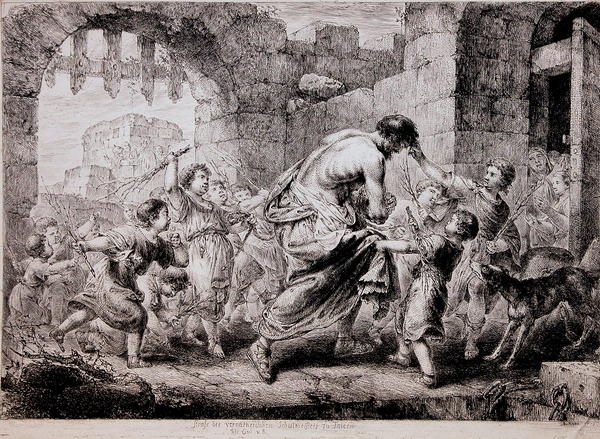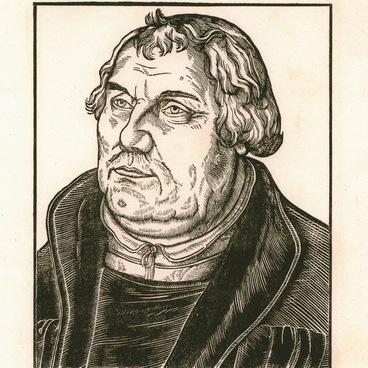Slaying of the Falerii Teacher is a classical fine art subject of Ancient Rome history. Military Commander Marcus Furius Camillus was at war with the Falisci tribe in South Etruria. With his army he approached the walls of a well-fortified city of Falerii. The city dwellers had enough food supplies and water, and sentries on the walls were watching every movement of the enemy troops. There was practically no hope to seize the walls by assault, therefore Camillus set up a camp nearby, fortified it and got ready for a siege. However, due to unexpected betrayal, the Falisci were defeated.
Every day, a school teacher whose name Plutarch failed to mention, would lead out children of rich Falerii citizens beyond the city walls for studies. The Romans did not prevent that, as they saw no threat in children. One day the teacher brought the children to Camillus’ camp and offered them as hostages: in exchange for children the citizens should open the gates for the enemy. Camillus got offended with such an offer. “I am going to win in a Roman way: with valor, siege and weapons”, said he. The enemies undressed the teacher, tied his arms behind his back, and handed out bamboo canes to the children. They told the children to flog the traitor and drive him back to Falerii; also, to tell everyone about what had happened.
The citizens were amazed with Camillus’ action. They opened the city gates for him, greeted him as a hero and sent ambassadors to Rome to conclude peace.
Every day, a school teacher whose name Plutarch failed to mention, would lead out children of rich Falerii citizens beyond the city walls for studies. The Romans did not prevent that, as they saw no threat in children. One day the teacher brought the children to Camillus’ camp and offered them as hostages: in exchange for children the citizens should open the gates for the enemy. Camillus got offended with such an offer. “I am going to win in a Roman way: with valor, siege and weapons”, said he. The enemies undressed the teacher, tied his arms behind his back, and handed out bamboo canes to the children. They told the children to flog the traitor and drive him back to Falerii; also, to tell everyone about what had happened.
The citizens were amazed with Camillus’ action. They opened the city gates for him, greeted him as a hero and sent ambassadors to Rome to conclude peace.



